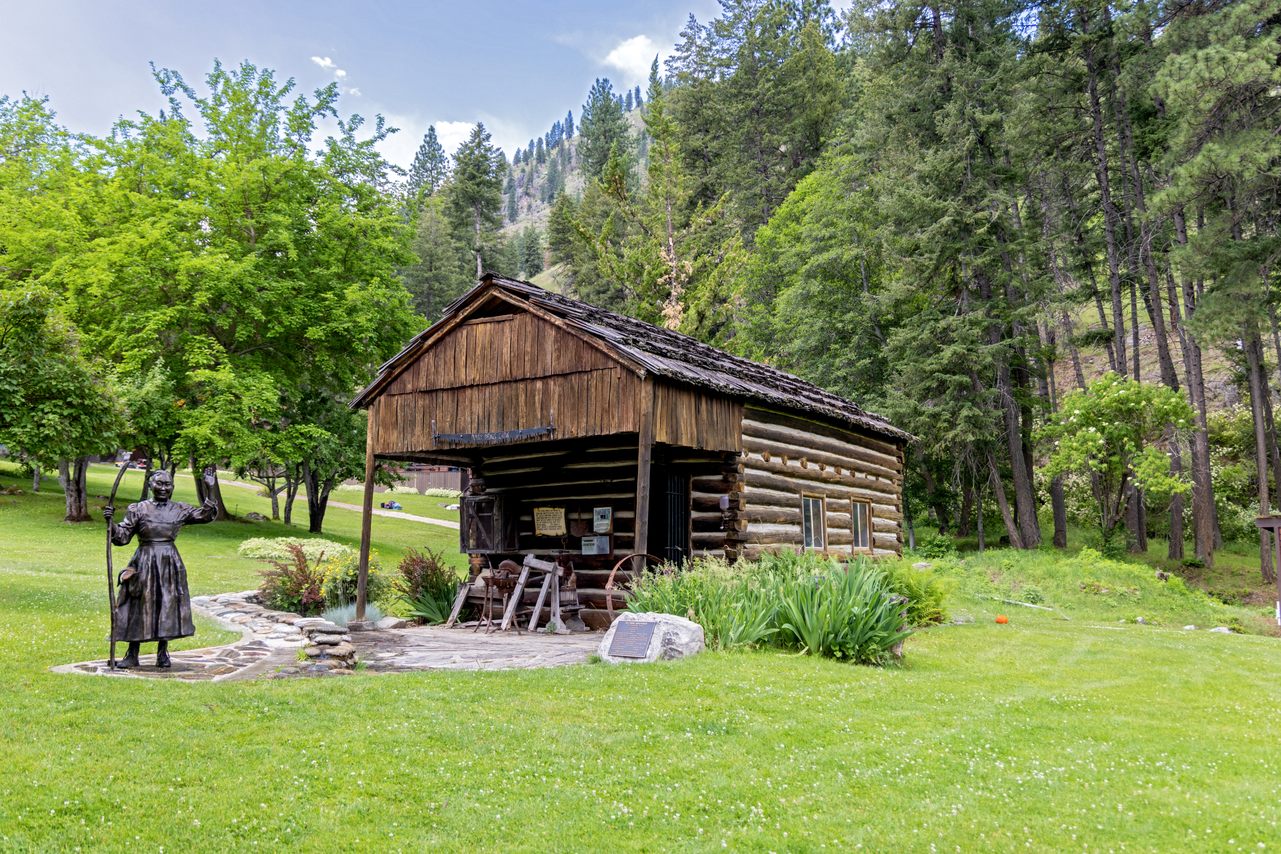
1. Polly Bemis Ranch
Perched on north-central Idaho’s Main Salmon River, this 26-acre historic estate gets its name from the legendary Polly Bemis—a Chinese immigrant who came to the town of Warrens (now called Warren) in 1872. Most believe that Bemis arrived in Idaho as a concubine. She eventually married a white man named Charles Bemis, carving out a life for herself as one of central Idaho’s most famous pioneers over the next 60 years.
The Bemis log cabin is now a museum and (along with its surrounding property) a National Historic Site. It’s only accessible by jet boat or via whitewater rafting trips. Salmon River jet boat tours include a stop at the Bemis Ranch, and bring you up close to the region’s other historical sites and homesteads, including the Buckskin Bill Museum.
Riggins, Idaho 83638
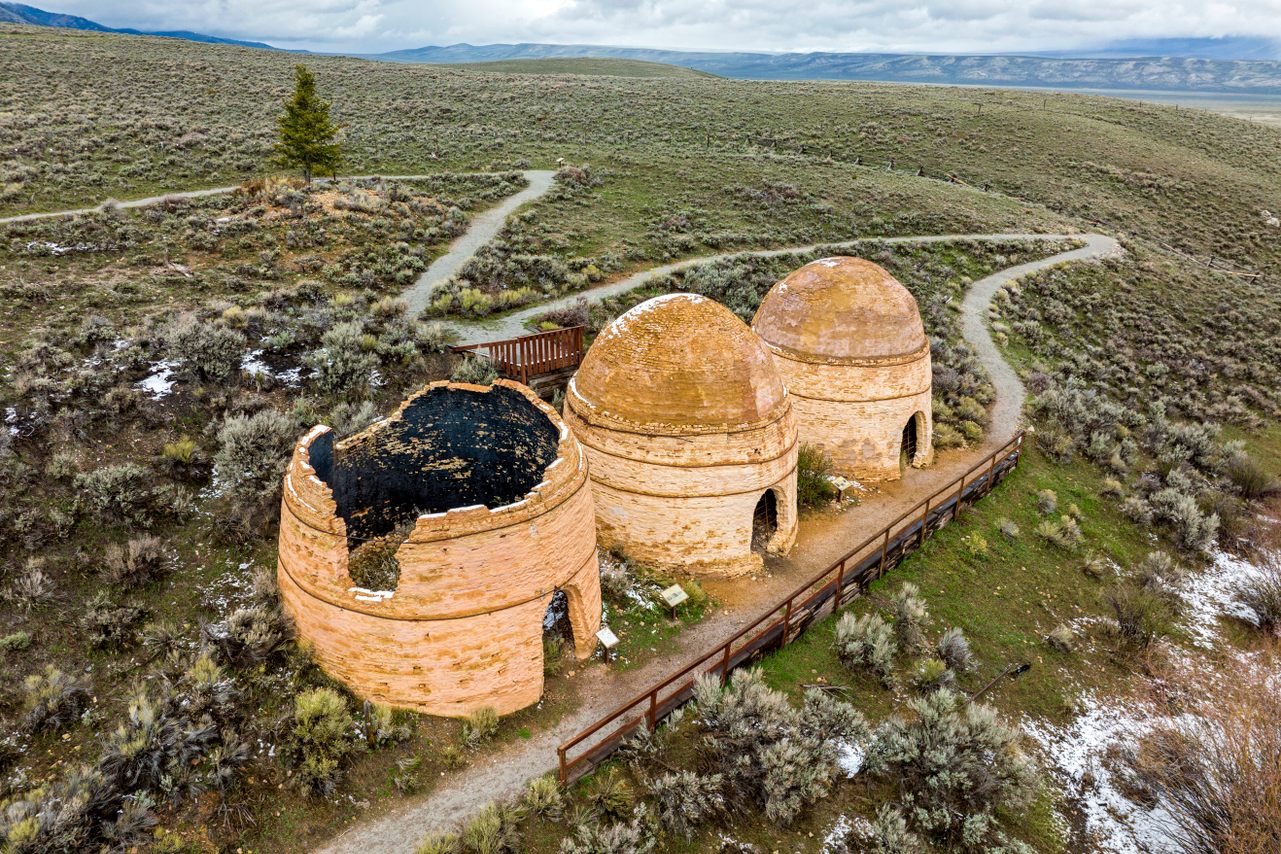
2. Sacajawea Historic Byway
The Sacajawea Historic Byway offers a chance to experience central Idaho’s rich history and high country scenery, including 7,323-foot-high Lemhi Pass, which sits on the Montana-Idaho border of the Continental Divide. Over 135 miles, you’ll experience the homeland of Sacajawea, a Lemhi Shoshone woman who played a major role in the Lewis and Clark Expedition’s Corps of Discovery as both a negotiator and guide.
Along the way you’ll encounter numerous stops, including the Charcoal Kilns, 16 enormous beehive-like furnaces used in 19th-century charcoal production. There’s also the Sacajawea Interpretive, Cultural, and Educational Center, which hosts everything from dutch-oven cookouts to traditional tribal gatherings.
US 93 in Salmon to SH-33 west of Mud Lake
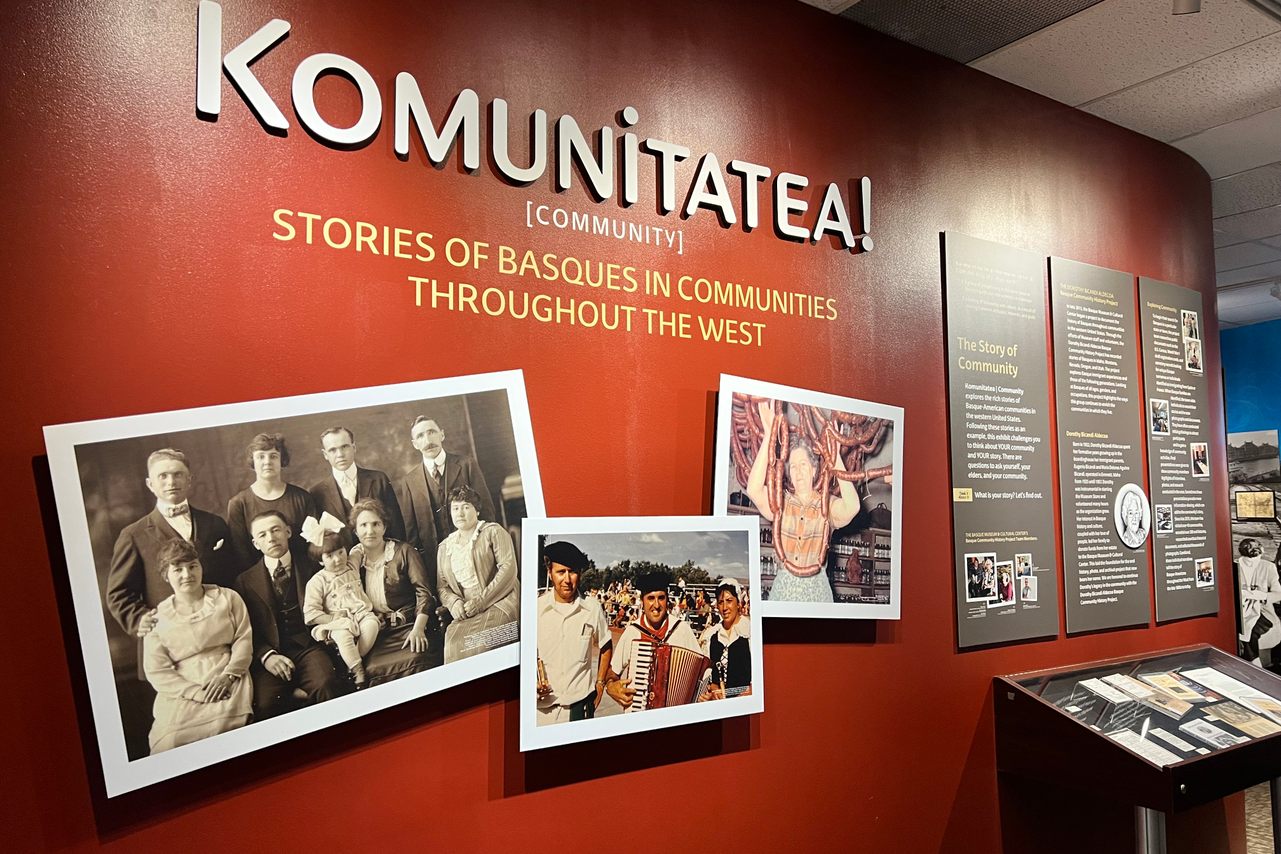
3. Basque Museum & Cultural Center
The Basque people have their origins in southwestern Europe, though many of them immigrated to the American West in the late 1800s and early 1900s to find work. Their history is on prominent display at Boise’s Basque Museum & Cultural Center. As the first museum dedicated to preserving the Basque legacy in the US, the downtown space is filled with artifacts representing thousands of years of Basque history.
Learn about shepherding in the West and the special carvings called arborglyphs that the herders left on aspen trees, and listen to oral histories from members of the local Basque community. The museum even offers lessons in Euskara, the traditional Basque language.
The museum is part of Boise’s Basque Block, a compact district brimming with markets, taverns, and restaurants serving up traditional Basque wines and pintxos, or small snacks.
611 W Grove St, Boise, Idaho 83702

4. B-23 ‘Dragon Bomber’ Wreckage
In late January 1943, a military aircraft on a routine training mission crashed along the southern shoreline of Loon Lake in Idaho’s Payette National Forest. The plane was en route to Tacoma, Washington when it encountered a heavy snowstorm and decided to make an emergency landing on the lake. Though all eight men on board survived, they were stuck in the wilderness for 15 days before being rescued. More than 80 years later, the aircraft’s remnants still sit among the towering conifer trees where the wreck originally occurred.
You can reach what’s left of the small, Douglas B-23 “Dragon Bomber” via a 12-mile loop trail through the forest. Most hikers recommend trekking counter-clockwise around the loop to arrive at this well-preserved crash site.
Loon Lake, Payette National Forest, Idaho
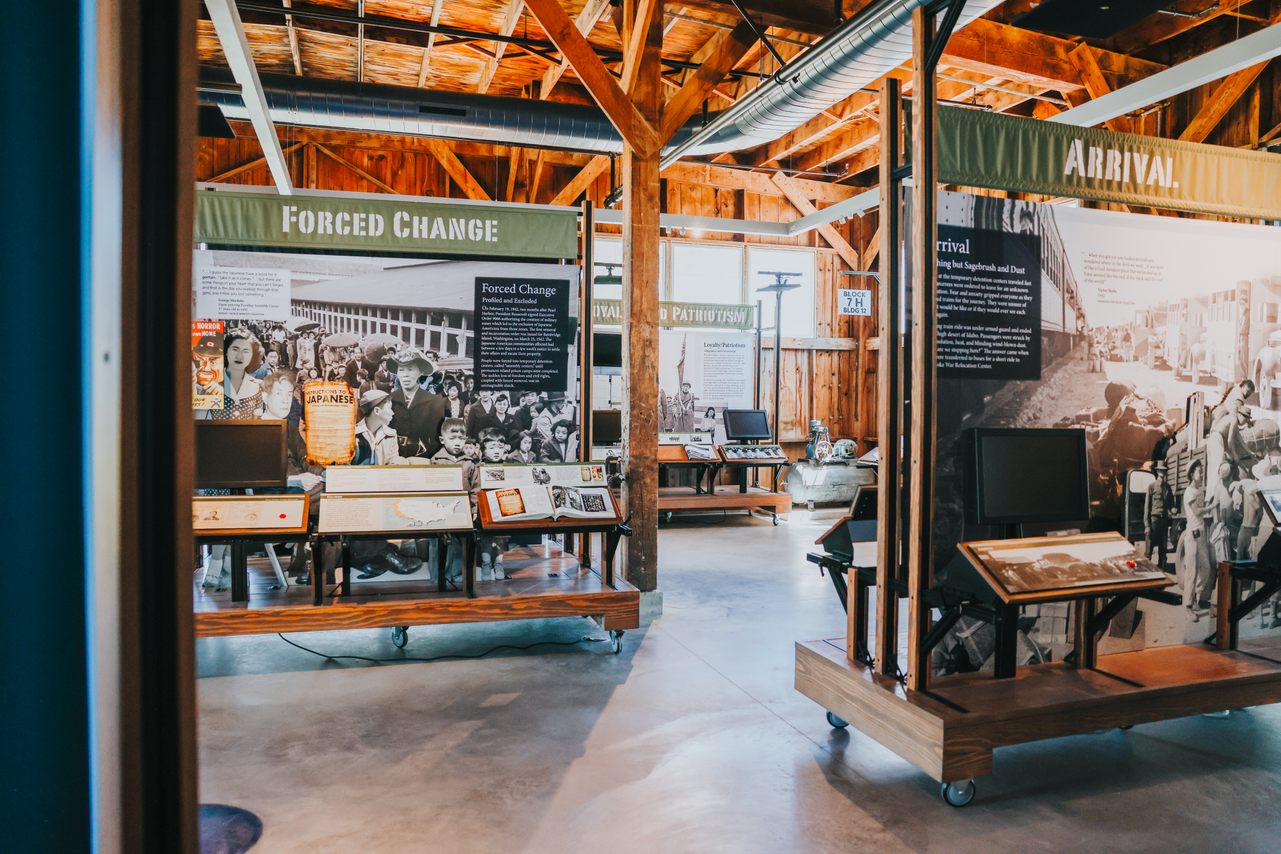
5. Minidoka National Historic Site
Just two months after the December 7, 1941 attack on Pearl Harbor by the Japanese military, President Roosevelt issued an order that resulted in the internment of nearly 120,000 Japanese and Japanese Americans. Many of those forced to leave their homes were sent to Minidoka, a “war relocation center” in Jerome, Idaho. This place of barbed-wire fences and tar-papered barracks eventually held over 13,000 Japanese Americans. Today the desert site remains as a testament to their legacy, as well as to the importance of civil liberties.
While only a portion of the center is still intact, its remaining structures include the Minidoka Visitor Center, which is housed in an old warehouse. It’s open to visitors on summer weekends and features exhibits, artifacts, and even a film, all of which help shed light on the Japanese Americans incarcerated here during WWII.
Ranger-led tours are also available on summer weekends, though the site offers 1.6 miles of gravel walking trails dotted with educational signage for self-guided tours. These are open to the public year-round.
1428 Hunt Rd, Jerome, Idaho 83338
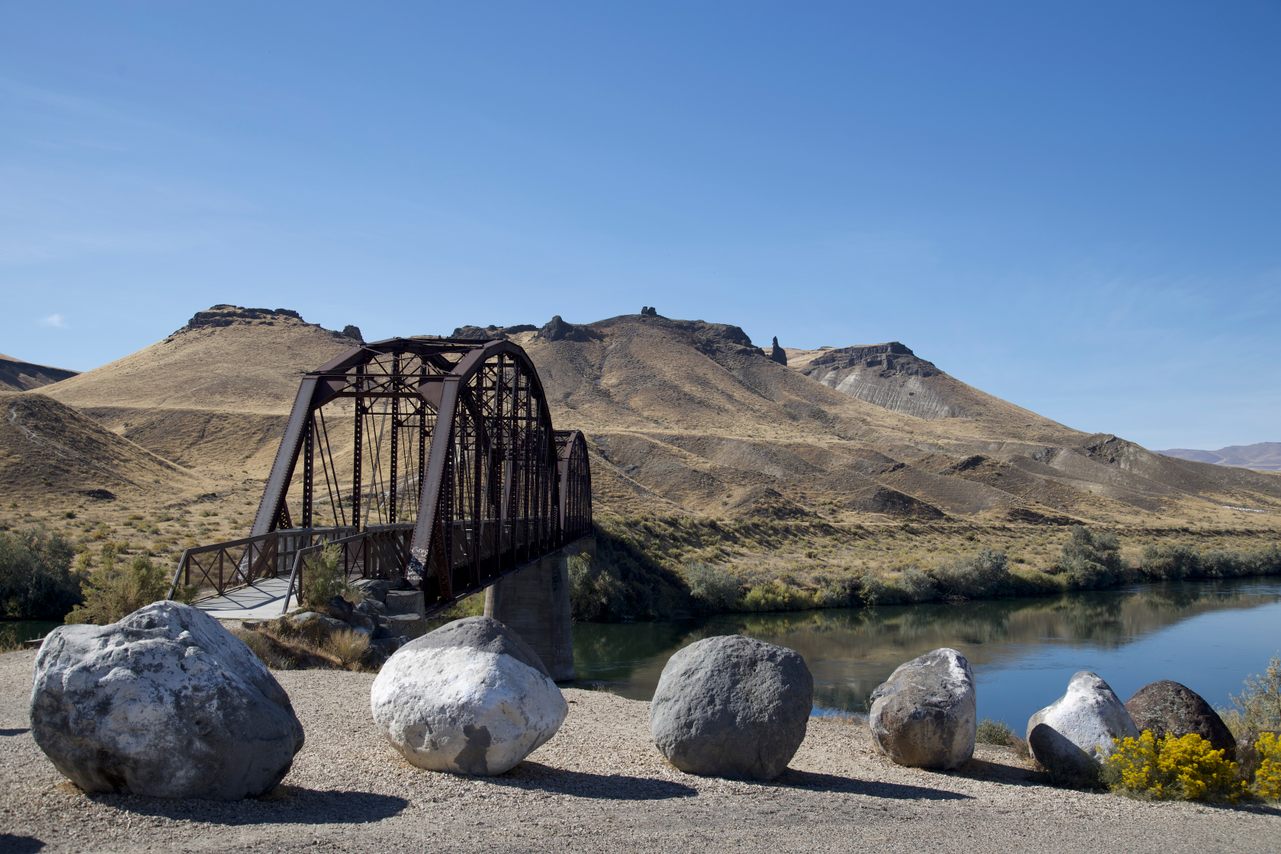
6. Celebration Park
Delve into a land of prehistory at Idaho’s first archaeological park, established along the Snake River in 1989. Home to a unique basalt landscape that includes round and smooth “watermelon rocks” carried here over hundreds of miles by a catastrophic Ice Age flood, the park is also known for its petroglyphs ranging from 100 to 10,000 years old.
Learn about the area’s human habitation during the Archaic Era (10,000 to 3,000 years ago), as well as the even earlier Paleolithic Era; embark on free petroglyph tours with park specialists; and get to know some of southwest Idaho’s early mining history with a visit to the Guffey Railroad Bridge. This iron and steel beauty was built in 1897 to transfer gold and silver ore for smelting.
An approximately 40-mile drive southwest from Boise, Celebration Park is accessible via the Western Heritage Historic Byway.
5000 Victory Ln, Melba, Idaho 83641

7. Cataldo Mission
The oldest building in Idaho resides at Coeur d’Alene’s Old Mission State Park in northern Idaho. Catholic Jesuit missionaries and members of the Coeur d’Alene Tribe constructed The Mission of the Sacred Heart (a.k.a. Cataldo Mission) between 1850 and 1853, well before Idaho became a state in 1890. Perched atop a hill above the Coeur d'Alene River, the mission served as a stop for westward settlers, traders, and other travelers.
Today, both the mission and the overall park help to educate visitors on the complexities between the missionaries and the tribal people. This includes the visitor center’s award-winning Sacred Encounters: Father De Smet & the Indians of the Rocky Mountain West, a six-part exhibit featuring artifacts from the Smithsonian and collaboration from both Jesuits and Coeur d’Alene Indians.
Along with the Mission church, there’s a restored Parish House and a historic cemetery to peruse.
31732 S Mission Rd, Cataldo, Idaho 83810
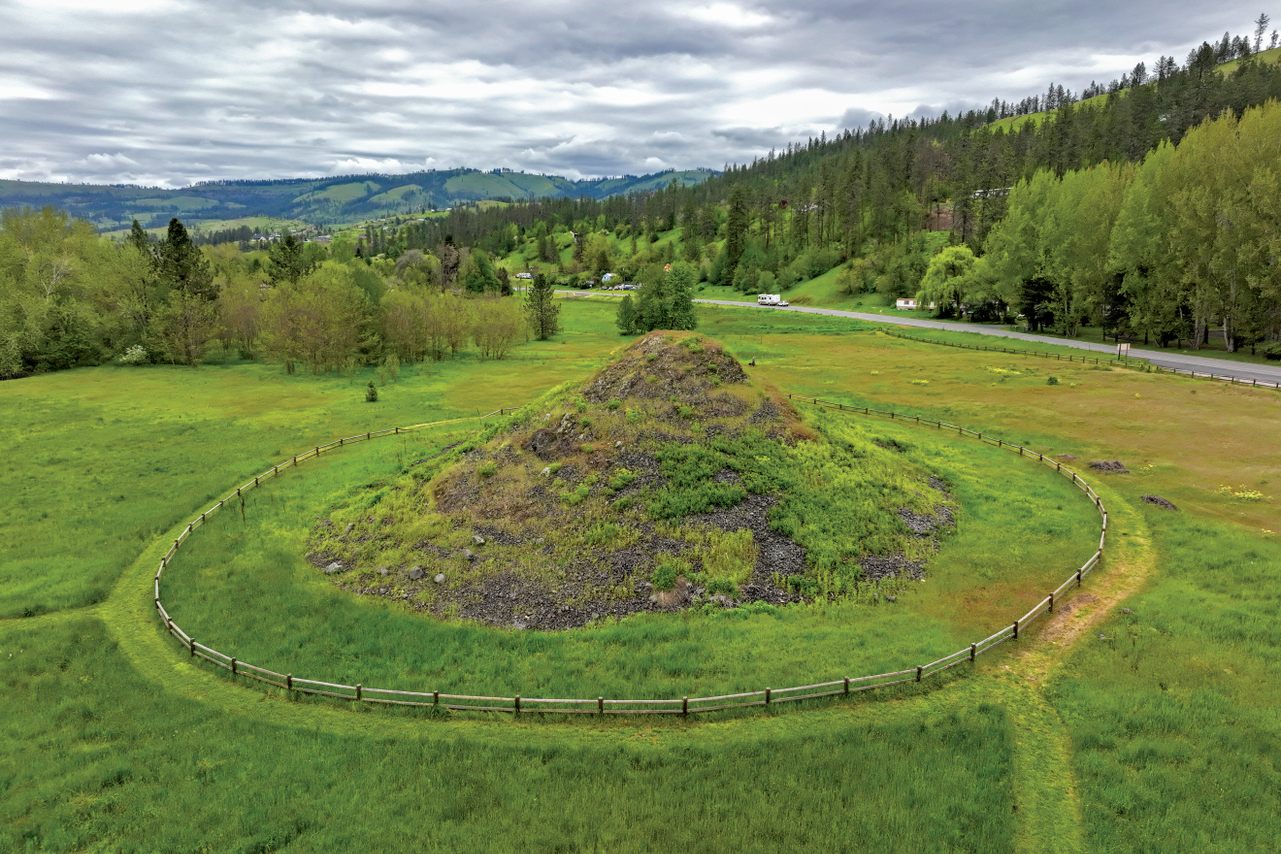
8. Heart of the Monster
Held sacred as the creation site of the nimíipuu, or Nez Perce people, Idaho’s 53-acre Heart of the Monster shares the story of how these Indigenous people came to be. Audio recordings tell the tale, which involves Iceye'ye (coyote) tricking a monster that was eating all of the animals into swallowing him as well, unbeknownst to the monster that Iceye'ye was carrying with him five stone knives. Iceye'ye then carved up the monster from its inside, releasing all of the animals and then spreading the monster’s remains across the land. These remains turned into many Indigenous tribes, including the Nez Perce.
Legend has it that the heart remains onsite in the form of a small hill. There are also a couple of exhibits and a place to sit and take in the story.
Heart of the Monster is part of the larger Nez Perce National Historical Park, a collection of 38 sites relating to the Nez Perce people across four states.
4243 US-12, Kooskia, Idaho 83539

9. Hooper Springs Park
Imagine quenching your thirst with cold, carbonated water straight from a natural spring. You can do just that at Hooper Springs, one of several natural soda springs found throughout southeastern Idaho. This particular spring has been attracting parched souls for over 160 years, including early emigrants along both the Oregon Trail and the California National Historic Trail who were drawn to its cold, bubbling waters. One in particular, Sarah White Smith, described the taste as like “soda water, especially artificially prepared.” Others doused it with flavorings to make it even tastier.
The spring’s sparkling and clear waters remain free to sample (bring a cup!). There are also picnic tables where you can sit and enjoy your natural beverage.
1805 Government Dam Rd Soda Springs, Idaho 83276
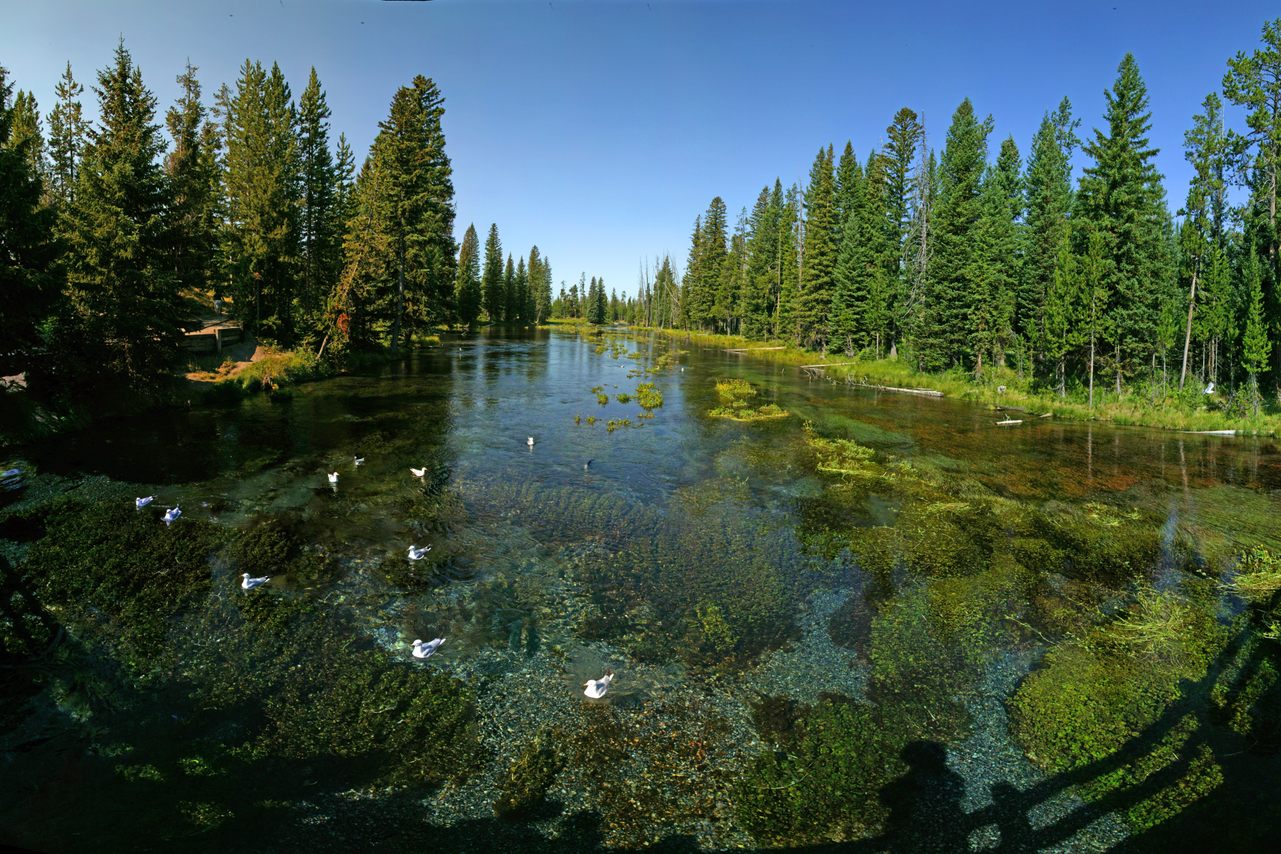
10. Johnny Sack Cabin and Big Springs
Over 120 million gallons of clear water flows from the ground at Big Springs, one of the largest springs in the country, daily. Adjacent to this natural attraction is another curious wonder: a log and stone cabin built by German immigrant and cabinet maker Johnny Sack. Sack began building his home in 1929 and it took him three years to construct it, using basic hand tools to do most of the work; it is now one of the most photographed structures in this area known as Island Park.
Sack’s use of split bark in both the cabin’s furniture and interior is a trademark feature of the space. It remains visible in everything from the structure’s window trim to a ceiling lamp that Sack made using seventy-two hand-crafted pieces of wood.
Along with the cabin, there’s a small water-wheel that Sack built to harness hydropower from the springs for electricity.
The cabin is open to visitors from mid-June through mid-September.
S Big Springs Loop Rd, Island Park, IDAHO 83429
Sponsored by the Visit Idaho. Click here to explore more

